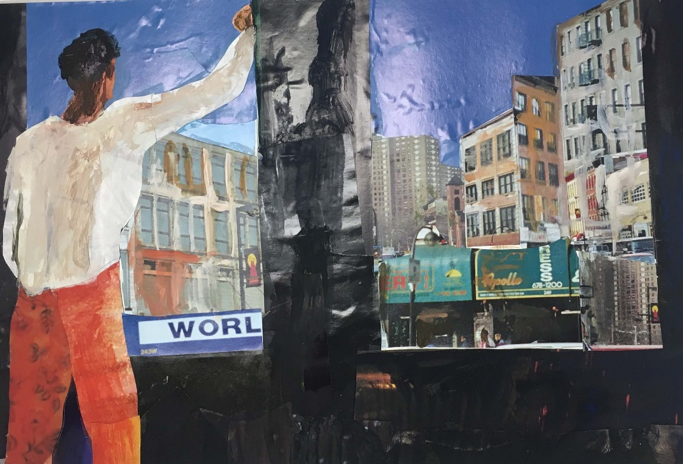Activity Guide by Kate Kwasneski, Intern, Grinnell College Museum of Art
Harlem: A Poem
by Walter Dean Myers, illustrated by Christopher Myers
Walter Dean Myers wrote Harlem: A Poem, and it was illustrated by his son, Christopher Myers. In it, he talks about the history and present of Harlem, the part of New York City where he grew up. The book tells how Harlem became what it is today: Black people from all over the US migrated there to form a community. Harlem became a cultural center of the U.S. as well as the home of several art movements like jazz, ragtime, and jazz poetry. The Harlem Renaissance, which happened in the 1920s and early 1930s, was the name given to the increased popularity of all these art forms that included several of the most famous Black writers, musicians, and artists in American history. Myers tells the story of Harlem and how it became the home of so much art and culture.
Create
Harlem is a neighborhood in a city, but more than anything else, the Harlem that Walter Dean Myers writes about is a community. He describes a place where people live together, share a culture, and spend time with their neighbors. Draw a community. It can be real or imaginary, the one you grew up in or one you’ve never been to, in a city or in the country. When drawing your community, think about the buildings and streets. Are the buildings all the same height, or are they each unique? Are the streets wide or narrow? Harlem is famous for its buildings called brownstones, which are rows of townhouses made of, unsurprisingly, brown stone. What kind of building is your community known for? Add trees, people walking around, and animals. You could draw a view from the street or a map of the whole community as seen from above.
For this example, I used crayon to outline the buildings, windows, and the moon in the sky. I then used watercolor over the crayon to add color to the buildings. Since the wax in crayons is water resistant, watercolor paint does not stick in places where the wax is. This technique is called wax-resist. You could use this technique, or you could use markers, just crayons, or cut buildings out of pieces of paper and glue them down!
Write
What happens in the community you created? Who lives there, and what do they do there? Tell a story of something that happened in this community. Think about when the people in your community moved in, and why.
Listen to a Meet-the-Author recording with Christopher Myers about illustrating Harlem: A Poem
Check out the TeachingBooks page for Harlem: A Poem to find interviews and videos with Walter Dean Myers and Christopher Myers collected into one place.
Web support:
Daniel Strong
Associate Director and Curator of Exhibitions
Grinnell College Museum of Art


